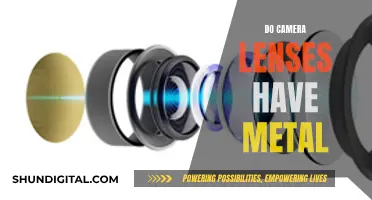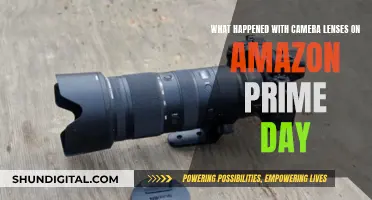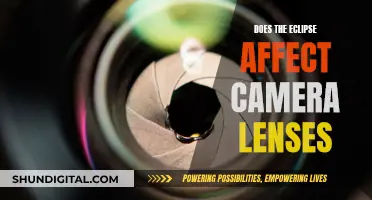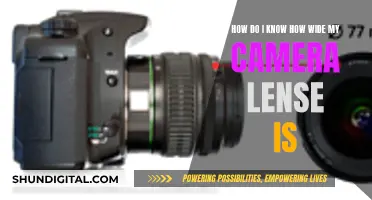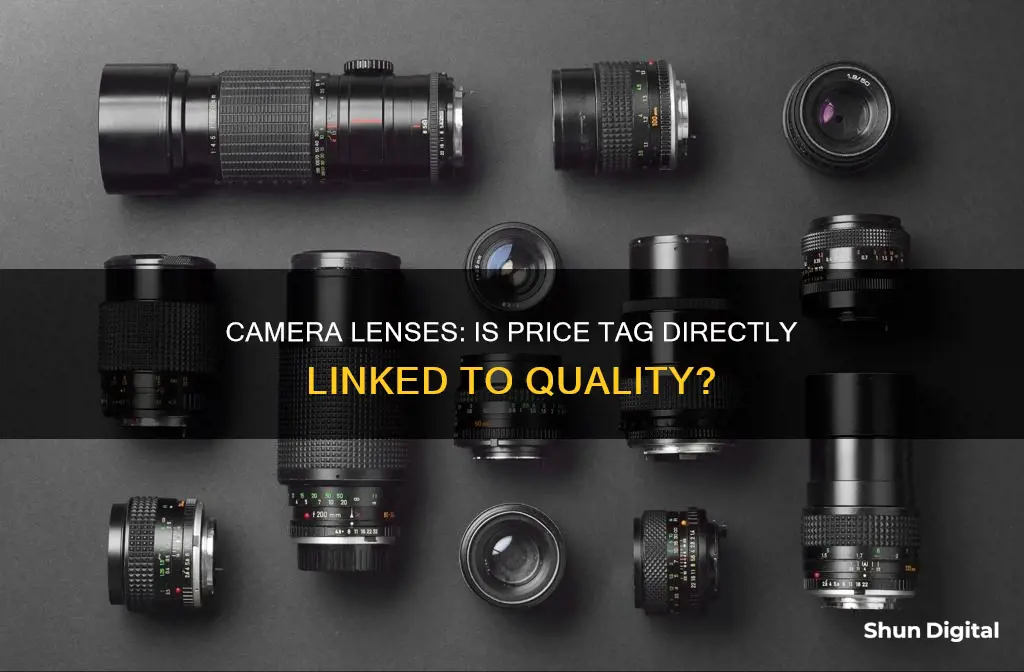
There is a wide range of lenses available for cameras, from cheap kit lenses to expensive professional lenses. But is it worth investing in an expensive lens?
The answer depends on several factors, including the skill level of the photographer, the intended use of the photos, and the type of camera body being used. For beginners, an expensive lens may not provide a significant improvement in photo quality. This is because lenses can be a bottleneck, and even the sharpest and best-built lens can produce blurry photos if the photographer doesn't have the skill to use it properly. Additionally, other factors such as lighting, composition, and post-processing techniques play a significant role in the final image quality.
However, for more skilled photographers, there are several advantages to investing in professional-grade lenses. These lenses often have larger maximum apertures, allowing for shallower depth of field and better light-gathering capabilities. They also tend to have constant apertures throughout the focal length range, faster and quieter focusing motors, better weather sealing, and improved sharpness, contrast, and colour reproduction.
When deciding whether to invest in an expensive lens, it's important to consider the specific needs and skill level of the photographer, as well as the intended use of the images. For most casual shooters or amateurs, an entry-level camera body and kit lens may be sufficient. However, for more serious photographers or those seeking specific capabilities, such as low-light photography or sports photography, investing in a higher-quality lens may be worthwhile. Ultimately, the decision comes down to balancing the desired features and image quality with the available budget.
| Characteristics | Values |
|---|---|
| Maximum Aperture | Professional lenses have larger apertures, which help with creating a shallow depth of field and light-gathering. |
| Constant Aperture | Cheap lenses change the max aperture as you zoom out, while professional lenses have a constant max aperture throughout the focal length range. |
| Focus Motor | More expensive lenses use a silent wave motor, which produces faster and quieter focusing. |
| Weather Sealing | High-end lenses have better weather sealing, which makes the lens last much longer. |
| Sharpness | Professional lenses are almost always sharper. |
| Internal Focus | Professional lenses focus without changing the length of the lens, which is useful when using filters. |
| Contrast | Professional lenses produce significantly more saturated colours than cheaper lenses. |
| Chromatic Aberration | Professional lenses produce less-noticeable fringing around edges. |
| Colour | Professional lenses do a better job at colour reproduction. |
What You'll Learn

Maximum aperture
The maximum aperture of a lens is determined by the ratio between its focal length and the apparent light opening size. This means that, for the same focal length, a larger lens is required for a larger aperture. Additionally, the light rays entering the lens need to be focused onto a very small area, smaller than the pixel size, to create a sharp image. This becomes even more challenging when designing a zoom lens, as the ratio between focal length and aperture must be kept constant.
The complexity of designing lenses with large apertures is reflected in their cost. Larger apertures require more weight and material, as well as more complex optics to focus light through a broader opening. Each increase in aperture size also requires more lens elements to reduce distortion, adding weight and requiring stronger motors for focusing. The higher-quality components and more intricate designs result in higher production costs, contributing to the overall expense of the lens.
Thailand Camera Gear: Are Lenses a Bargain?
You may want to see also

Constant aperture
A constant aperture lens maintains the same aperture throughout its zoom range, meaning that regardless of the focal length you set, the aperture remains the same. For example, an f/2.8 lens will have a maximum aperture of f/2.8 throughout its entire zoom range. In contrast, a variable aperture lens changes its aperture as you zoom in and out, meaning that the maximum aperture changes depending on the focal length you set.
The advantage of a constant aperture lens is that you can maintain a consistent exposure and depth of field as you zoom in and out. This can be particularly useful in low-light situations where you need a wide aperture to let in more light. The disadvantage of a constant aperture lens is the price – it tends to be more expensive than a variable aperture lens, due to the complexity of the lens design required to maintain a constant aperture throughout the zoom range.
The Nikon 70-200mm f/2.8 lens is an example of a constant aperture lens. Here, the 'f/2.8' refers to the maximum aperture, which remains constant throughout the zoom range. This means that you can shoot at f/2.8 at 70mm, 100mm, 150mm, 200mm, and everything in between.
A constant aperture lens is also known as a fixed aperture lens. With this type of lens, the aperture functions independently of the lens focal length. The barrel of the lens does not extend or retract when the focal length changes. This can be advantageous when using certain types of filters, as the physical length of the lens remains the same when zooming in and out.
Overall, a constant aperture lens can provide benefits such as consistent exposure, depth of field control, and improved low-light performance. However, it tends to come at a higher price point compared to variable aperture lenses.
Camera Contact Lenses: Fact or Fiction?
You may want to see also

Focus motor
The focus motor is one of the most important factors when considering whether to buy an expensive lens. More expensive lenses tend to use a silent wave motor, which is an improvement on the basic micro motors found in cheaper lenses. This type of motor produces faster and quieter autofocus, which is desirable for various genres of photography, including wildlife and portraiture.
- Faster and quieter autofocus: This motor type offers a more pleasant user experience, with faster and quieter autofocus performance compared to micro motors.
- Improved durability: Silent wave motors are known for their durability and can last much longer without problems. Cheaper lenses often develop issues with dust or even mould inside the lens after a year or two of use.
- Suitable for various photography genres: The fast, silent, and precise autofocus provided by silent wave motors makes them well-suited for wildlife, portraiture, and other genres that require quick and discreet focusing.
- Better user experience: The overall user experience is enhanced by the smooth and precise autofocus provided by silent wave motors, making it a worthwhile investment for photographers who value ease of use and performance.
Lens Compatibility: Can You Mix and Match Brands?
You may want to see also

Weather sealing
It's important to note that weather-sealed lenses should be paired with weather-sealed camera bodies for maximum protection. Even with a weather-sealed lens, if your camera body is not sealed, dust or water can still enter through the lens mount and cause issues. Additionally, weather sealing does not mean waterproof, so it's important to be cautious when shooting in heavy rain or near water.
Some manufacturers, like Canon and Sony, often include weather sealing in their high-end lenses, such as Canon's L-series and Sony's G Master lenses. Olympus is known for having the best weather sealing in the industry, with some of their cameras able to handle five times more precipitation than typical weather-resistant models.
If you're considering investing in weather-sealed lenses, it's worth checking the compatibility with your camera body and researching the specific sealing features offered by different manufacturers to ensure you're getting the level of protection you need.
What Shape Makes Camera Lenses Work?
You may want to see also

Sharpness
The sharpness of a lens is one of the most important factors to consider when buying a camera lens. While expensive lenses are known for their exceptional image quality, it is essential to weigh the benefits against the cost. In terms of sharpness, here are some key points to consider:
Image Quality
Expensive lenses often offer superior image quality, including increased sharpness. This is achieved through the use of high-quality materials, advanced manufacturing techniques, and rigorous testing during the research and development phase. The precision and durability of the materials used, such as durable metals, advanced composites, and weather-resistant coatings, contribute to the overall sharpness and performance of the lens.
Maximum Aperture
One of the most significant benefits of expensive lenses is their maximum aperture. While cheap lenses typically have maximum apertures of f/5.6 or smaller, professional lenses often offer apertures of f/2.8 or lower. Larger apertures allow for shallower depth of field and improved light-gathering capabilities, resulting in sharper images, especially in low-light conditions.
Constant Aperture
Cheap lenses often have variable maximum apertures that change as you zoom in or out. In contrast, many expensive lenses offer a constant maximum aperture throughout the focal length range. This consistency provides more flexibility and control over depth of field and exposure, resulting in sharper images across different focal lengths.
Focus Motor
Expensive lenses often feature silent wave motors, which enable faster and quieter autofocus. This not only improves the overall speed and accuracy of capturing sharp images but also enhances the user experience by reducing noise during autofocus operations.
Weather Sealing
High-end lenses typically have superior weather sealing compared to their cheaper counterparts. This added protection ensures that the lens can withstand harsh conditions and reduces the likelihood of dust, moisture, or mould accumulating inside the lens over time. As a result, expensive lenses tend to last longer and maintain their sharpness even with extended use.
Internal Focus
Cheaper lenses often extend in length as you zoom in, while many expensive lenses maintain a constant physical length. This feature is particularly advantageous when using filters, as it eliminates problems associated with changing lens length during zooming or focusing.
Diminishing Returns
While expensive lenses offer improved sharpness, it is important to consider the law of diminishing returns. The difference in sharpness between a cheap lens and an expensive lens may not always justify the significantly higher price tag. In some cases, the improvement in sharpness may be marginal and not noticeable without pixel-peeping or printing at large sizes.
Skill Level
It is essential to match the lens to your skill level. For beginners, investing in an expensive lens may not yield significant improvements in sharpness. Proper technique, skill in post-processing, and a good understanding of photography fundamentals are crucial to maximising the sharpness of any lens.
In conclusion, while expensive lenses often offer improved sharpness, it is essential to consider your specific needs, skill level, and budget. In some cases, a cheaper lens may provide sufficient sharpness for your requirements, especially if you are just starting your photography journey. However, if you are a professional or have the financial means, investing in a high-end lens can provide a noticeable boost in sharpness and overall image quality.
Camera Lenses: Radioactive or Not?
You may want to see also
Frequently asked questions
No, beginners should not buy a high-end lens as they probably won't see any significant improvement in their photos.
Professional lenses offer a wider maximum aperture, constant aperture, a silent wave motor for faster and quieter focusing, weather sealing, sharper images, internal focus, better contrast, less chromatic aberration, and better colour reproduction.
Yes, as the lens will likely outlast the camera. However, the camera body and lens should be somewhat balanced in quality.
No, as most people do not print their photos nor have monitors that can display the full resolution of their camera.


